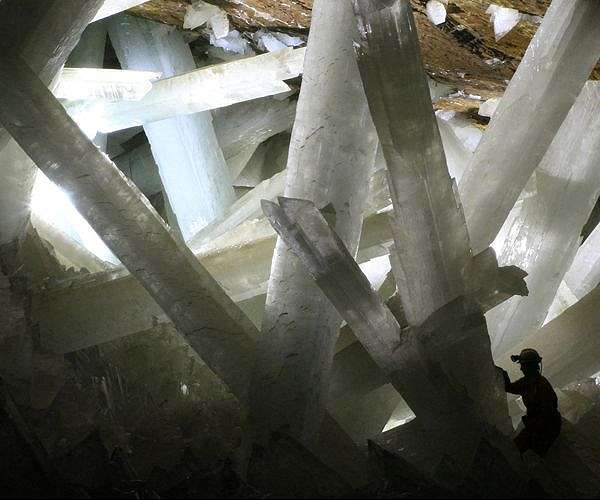Laser-powered spectrometer tested on Earth may uncover microbial fossils on Mars
by Robert Schreiber
Berlin, Germany (SPX) Feb 26, 2025
The possibility that microbial life once thrived in ancient Martian waters has intrigued scientists for years. Now, researchers have demonstrated a method to detect fossilized microbes in gypsum deposits, offering a promising approach for future Mars missions to confirm past life on the Red Planet.
“Our findings provide a methodological framework for detecting biosignatures in Martian sulfate minerals, potentially guiding future Mars exploration missions,” said Youcef Sellam, a PhD student at the Physics Institute, University of Bern, and lead author of a study published in Frontiers in Astronomy and Space Sciences. “Our laser ablation ionization mass spectrometer, a spaceflight-prototype instrument, can effectively detect biosignatures in sulfate minerals. This technology could be integrated into future Mars rovers or landers for in-situ analysis.”
Billions of years ago, Mars had abundant liquid water. As the planet’s water sources gradually disappeared, minerals such as gypsum and other sulfates formed from evaporating pools. If microbial life once existed in these ancient waters, their remains may have been preserved in these mineral deposits.
“Gypsum has been widely detected on the Martian surface and is known for its exceptional fossilization potential,” explained Sellam. “It forms rapidly, trapping microorganisms before decomposition occurs, and preserves biological structures and chemical biosignatures.”
To validate their detection method, the researchers studied gypsum samples from the Sidi Boutbal quarry in Algeria, an Earth-based analog for Martian sulfate deposits. This site developed during the Messinian Salinity Crisis, a period when the Mediterranean Sea was cut off from the Atlantic Ocean, leading to hypersaline conditions and the deposition of thick evaporite layers, including gypsum.
Using a laser-powered mass spectrometer-designed for potential use in space-the researchers analyzed the chemical composition of these gypsum samples at a micrometer scale. They looked for biosignatures based on specific morphological and chemical characteristics, including filamentous structures, carbonaceous material, and the presence of minerals like clay and dolomite, which are often associated with microbial activity.
Their analysis revealed fossilized, sinuous filaments embedded in the gypsum, previously identified as benthic algae or cyanobacteria, but now interpreted as sulfur-oxidizing bacteria similar to Beggiatoa. These filaments were surrounded by dolomite, clay minerals, and pyrite, further supporting the presence of biological activity. The formation of dolomite within gypsum in the absence of organic life would typically require high temperatures and pressures inconsistent with Martian conditions, making its presence a strong indicator of past microbial life.
If future Mars missions identify similar mineral compositions and microfossil structures within Martian gypsum deposits, it could serve as compelling evidence of ancient life on the planet. However, scientists caution that distinguishing true biosignatures from abiotic mineral formations remains a significant challenge.
“While our findings strongly support the biogenicity of the fossil filament in gypsum, distinguishing true biosignatures from abiotic mineral formations remains a challenge,” said Sellam. “An additional independent detection method would improve the confidence in life detection. Additionally, Mars has unique environmental conditions, which could affect biosignature preservation over geological periods. Further studies are needed.”
Sellam also highlighted the importance of this study for Algerian planetary science. “This research is the first astrobiology study to involve Algeria and the first to use an Algerian terrestrial analog for Mars,” he said. “As an Algerian researcher, I am incredibly proud to have introduced my country to the field of planetary science.”
He dedicated the study to his late father, acknowledging his unwavering support throughout his research journey. “Losing him during this research was one of the most difficult moments of my life. I hope that he is proud of what I have achieved.”
Research Report:The search for ancient life on Mars using morphological and mass spectrometric analysis: an analog study in detecting microfossils in Messinian gypsum
Related Links
University of Bern
Mars News and Information at MarsDaily.com
Lunar Dreams and more

